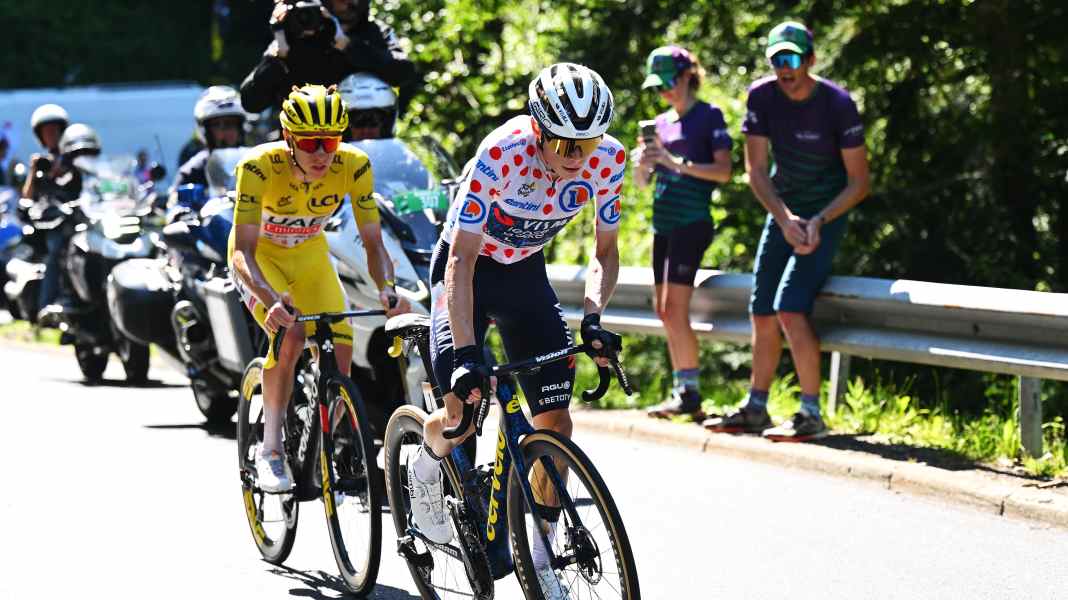
Tour de France 2024 - Stage 19: Embrun - Isola 2000 | 144.6 Kilometers

Curtain up for the grand finale in three acts. Act one: Climbing to the sky. The riders have 4,400 meters of climbing ahead of them, spread over just 145 kilometers. Only the 20th stage is more intense, with 4,600 meters of climbing over 133 kilometers. But on the 19th stage, the climbs are longer and the altitude is higher, as the Cime de la Bonette is the highest asphalt road in France.
The stage has the potential to shake up the overall classification. None of the favorites for yellow can afford a moment of weakness, as this would result in a drop in the classification. Is this the stage that Visma | Lease a Bike wants to use for a big attack on yellow? Probably yes. But of course the plan also includes legs and opportunities.
The top teams will ride at the front from the start, initiate a long breakaway and wait for potential weak moments from their opponents. The question will be how well the helpers get over the first climb and who of the team is still at the front on the Cime.
The captains could use some team power there, as there are still 40 kilometers of descent before the final climb, where real time differences can be made. The descent is narrow and technical in the upper section, it has high-speed passages but also pedal sections. Bike handling, motor power and aerodynamics can make a difference. And one slip-up can end the race.
If the captains are already among themselves before the Cime, very aggressive scenarios are conceivable. The steep section at the end of the Cime is the kind of kicker that Pogacar loves. An attack like on the Galibier would be possible. The descent would then be of enormous importance and at the end there is a final climb of 16 kilometers.
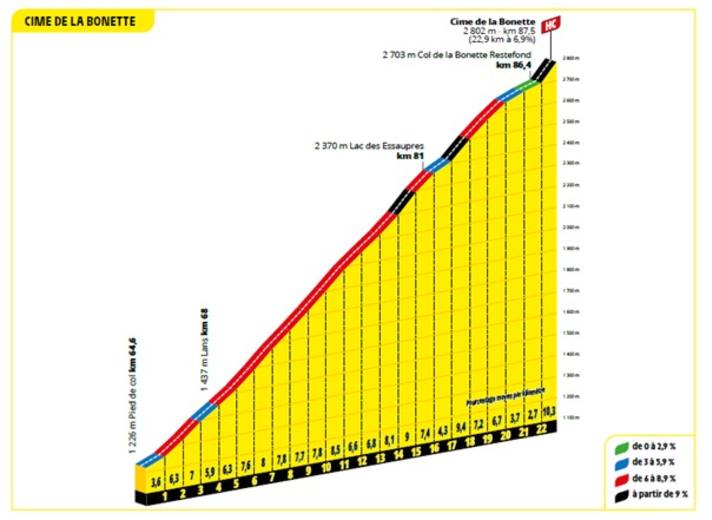
The key question will also be who can cope best with the altitude. Above 2,400 meters, the effects of the thin air are pronounced. Although the teams prepare themselves with high-altitude chains, none of the favorites have had a trouble-free start to the tour. So far, this ability has only been tested on the 2,642 meter high Galibier on the fourth stage.
The conditions for absolute high tension are therefore set. What does this mean for the material? Which screws can the teams still turn to make the ride over the mountain giants faster?
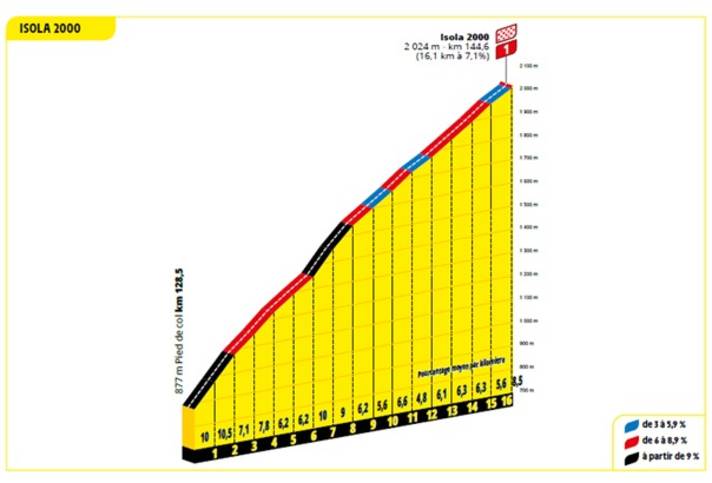
Logically, the teams will try to put the lightest possible bikes at the start in view of the climb. But the minimum weight of 6.8 kg stipulated by the UCI is not being pushed to the limit by many. Sponsor obligations prevent the bikes from being brought up to this weight with tuning parts. The average value of our list is 7.3 kg.
So the aerodynamic adjustment screw remains. If you have two bikes to choose from, you have to decide again today which bike it should be. Will Vingegaard again go for the aerodynamic S5 with 1x12 set-up to make his aero bike as light as possible, as he did on the Galibier? If the “isolated captain” scenario is deemed likely for Visma, this would be the means of choice to be best prepared for the descent in the potential head-to-head battle with Pogacar and Evenepoel. We know from previous calculations that aerodynamics are only no longer a factor on steep sections of 9 percent and more.
Technically, Vingegaard is a very good downhill skier. So far in the Tour, he has lost time more on the flatter sections of the descents. From his point of view, this speaks in favor of pulling out the aerodynamics card. Especially as Vingegaard has to attack to win the Tour.
To get to the bottom of the material question, we simulate an attack 900 meters before the Cime and a solo ride to the finish.
Number of the day: 1:50 minutes
Vingegaard saves 1:50 minutes by ditching the climbing bike and riding the fast S5 over the mountains. In the simulation, we assume that he chooses a 1x12 set-up and thus brings the machine to 7.3 kg. Curiously, the two bikes that Vingegaard has at his disposal cover the entire spectrum of our scenario.
The (almost) entire field at a glance*
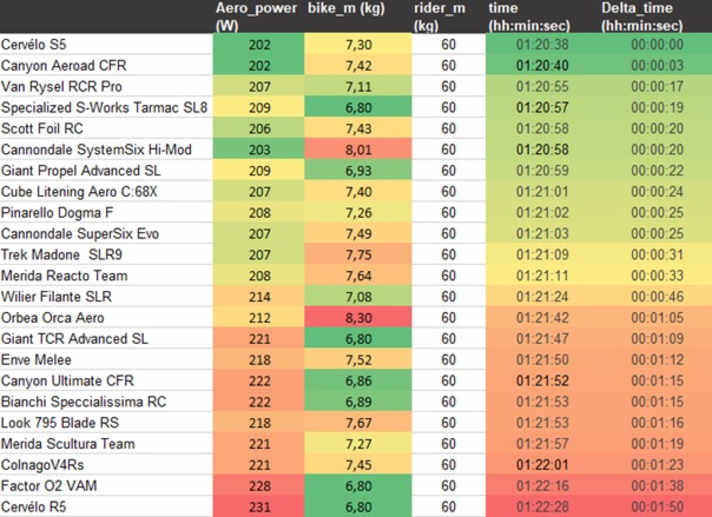
*) The calculations are based on the bikes tested by TOUR in the laboratory and wind tunnel. The bikes at the Tour de France may differ in some details. Of course, we have also not yet been able to examine last-minute prototypes. Background to the simulation.
Table: In our simulation of stage 19, the Cervelo S5 with a 1x12 set-up is mathematically the fastest bike.
Our expert
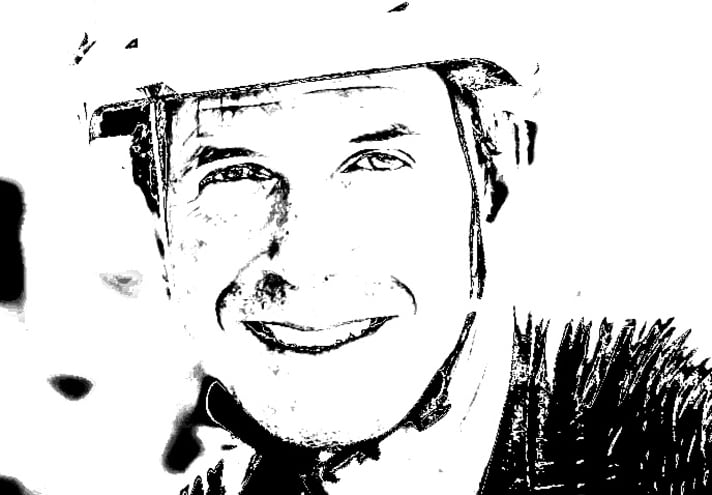
Robert Kühnen studied mechanical engineering, writes for TOUR about technology and training topics and develops testing methods. Robert has been refining the simulation calculations for years, they are also used by professional teams.

